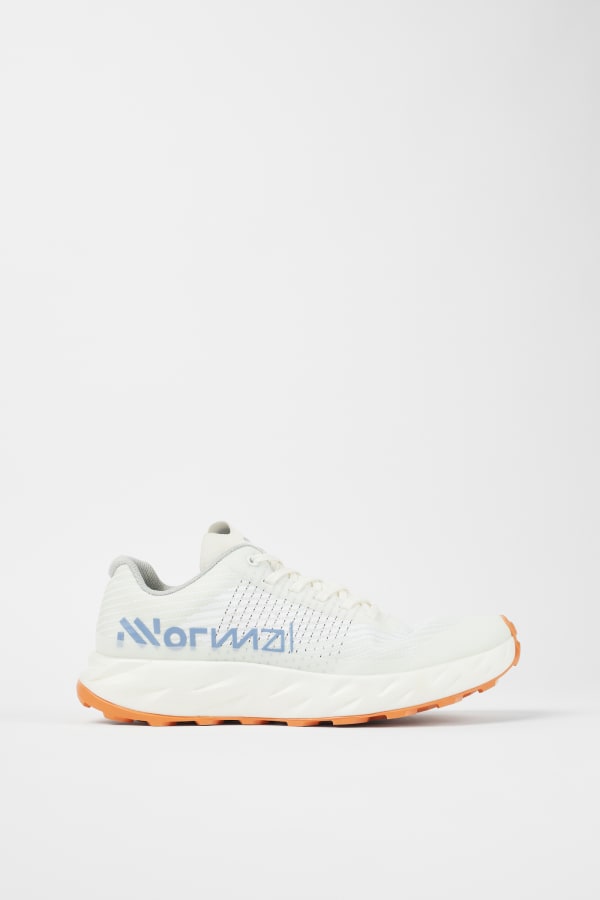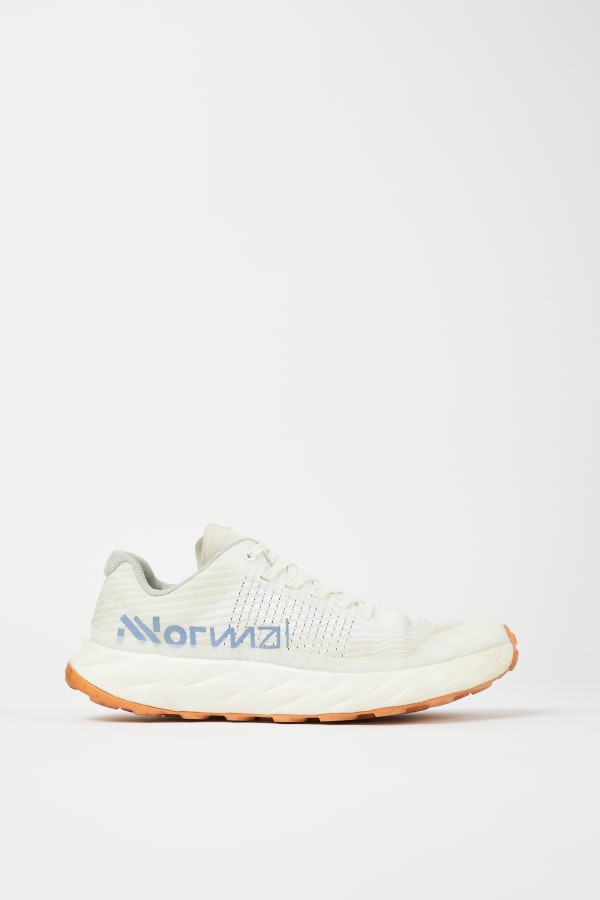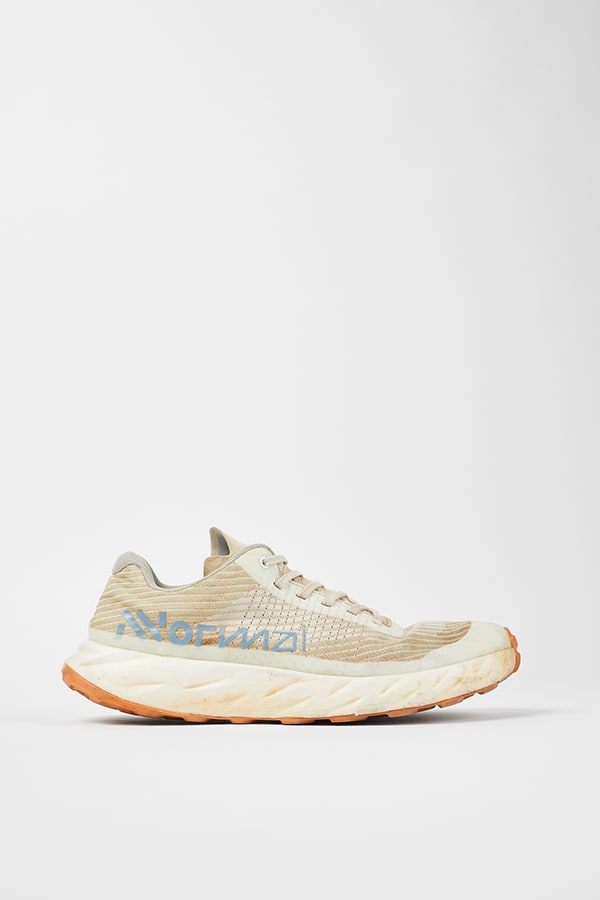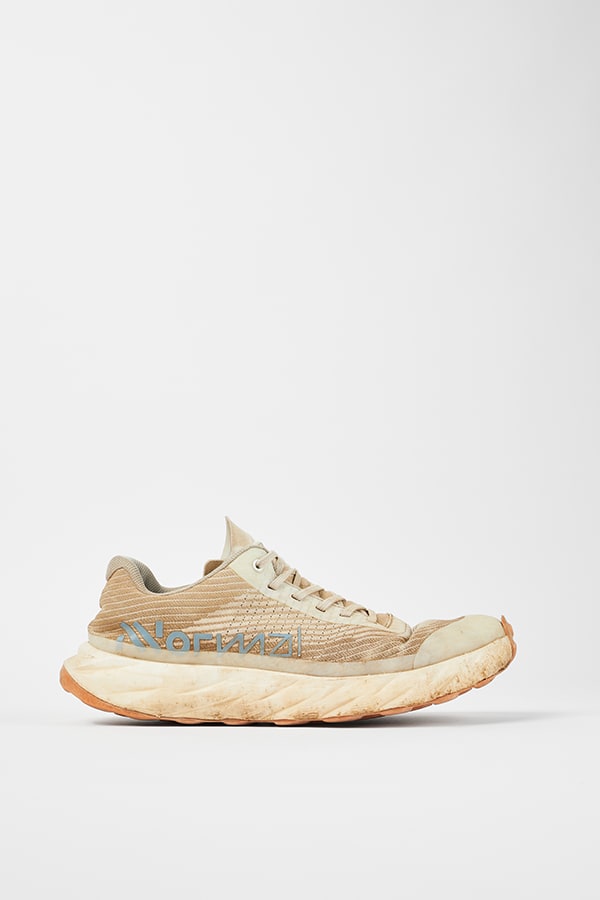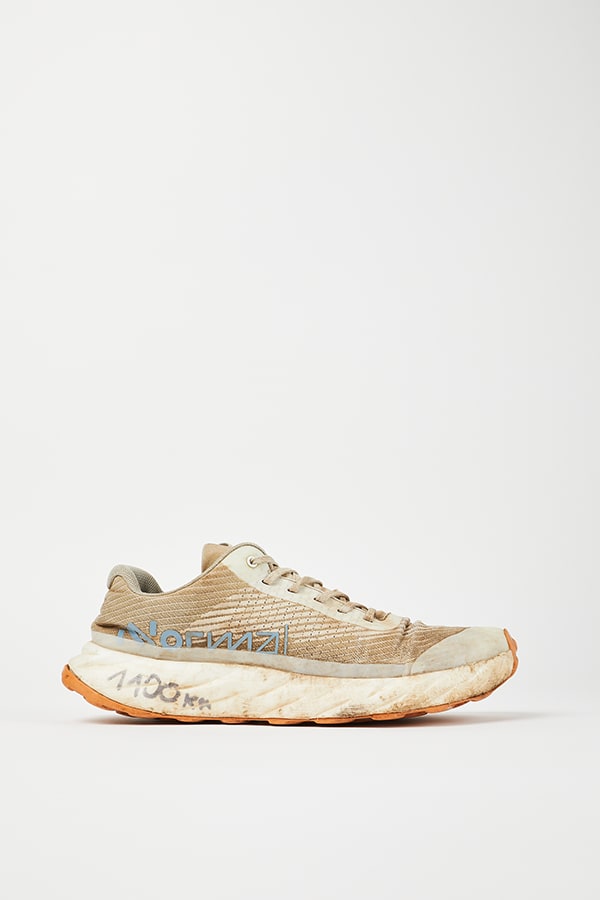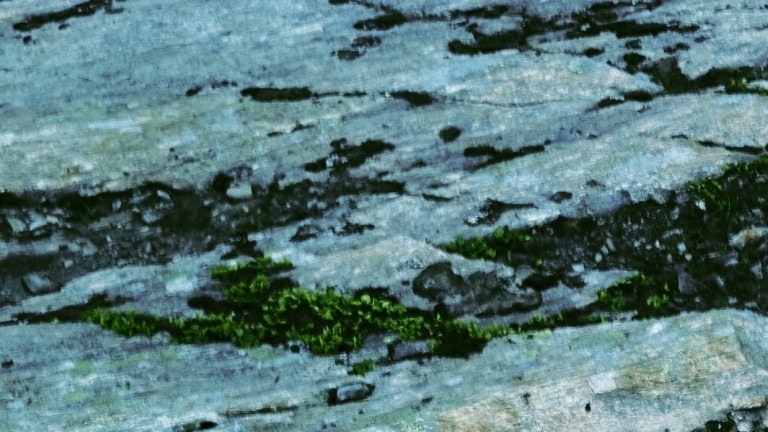

Kjerag. More kilometres, less emissions
Durability takes you places
Durability is clearly our reason for being. At NNormal, we firmly believe that the longer we use our sports equipment, the less impact it has on the environment. The longer the life, the lower the consumption and emissions. For this reason, we conducted a study to determine how many kilometres our footwear lasts and to prove that durability is essential to reducing our footprint.
Durability test: Kjerag
We’ve conducted a study based on a sample of 511 runners of all levels from around the world. Here’s what we’ve found: your Kjerag should last 1,350 km before it’s completely worn out or before its lifecycle is over.
To reach this conclusion, runners provided us with data regarding their weight, the kilometres they ran with their Kjerag shoes, the terrain they used them on, and the level of wear on their shoes, which was measured using our durability scale:
Thanks to this scale, we were able to link the wear of each person's shoes to the kilometres covered and, consequently, predict the average lifespan of Kjerag shoes.
Distribution of the kilometers predicting the end of life of Kjerag.
- The graph represents the probability of having a certain end of life
- We can see that most of the people will run in the range of 1000-1200 km (28,57%)
- But still a lot of people will push the shoes to run more than 1000 km (65,16%)
X Kilometers; Y % Population
Distribution of the 511 runners across the durability scale.
- The graph represents the wear and tear of the shoe (vertical depending on the kilometers run (horizontal)
- Each point is a specific person
- The line permits to predict the average end of life of Kjerag (5 = end of life) = 1.350km
X Kilometers; Y % Durability Scale (5 = End of life)
A new approach to measuring environmental impact
What’s the point of calculating the emissions generated by manufacturing a pair of shoes without knowing how many kilometres the shoes will last?
At NNormal, we believe that durability should be included in the equation when calculating the environmental impact of sports equipment. That’s why we want to promote this methodology.
During the past season, we calculated that the emissions from our Kjerag and Tomir shoes were 7.5 kg CO2e per pair. Considering the average of 1,350 kilometres that our consumers run with their Kjerags, we have significant data that these shoes generate only 5.5 kg of CO2 per 1,000 kilometres.

Kjerag 5.5 kg CO2 / 1,000 km
How long do your shoes have lasted?
“Thinking about the carbon footprint of a shoe per kilometre, rather than just the total carbon cost, makes sense. We look at how carbon builds up in the shoe over time and use, not just at the moment of its manufacture. This helps us determine which shoes are better for the planet, taking into account their durability and longevity. This can also motivate companies to design shoes that are better for our planet in the long term.”

Brianna Rita Pagán
Deputy Manager at NASA Goddard Earth Sciences Center Data and Information
What should you do if your Kjerags wear out before 1,350 km?
If the sole wears out before that, you can resole your shoe with the Vibram Resoling Program.
Discover the program
If your shoes suffer any minor wear and tear, use your nearest cobbler to repair them.
When your shoe is completely worn out, bring it back so we can give it a second life.
Send you shoes
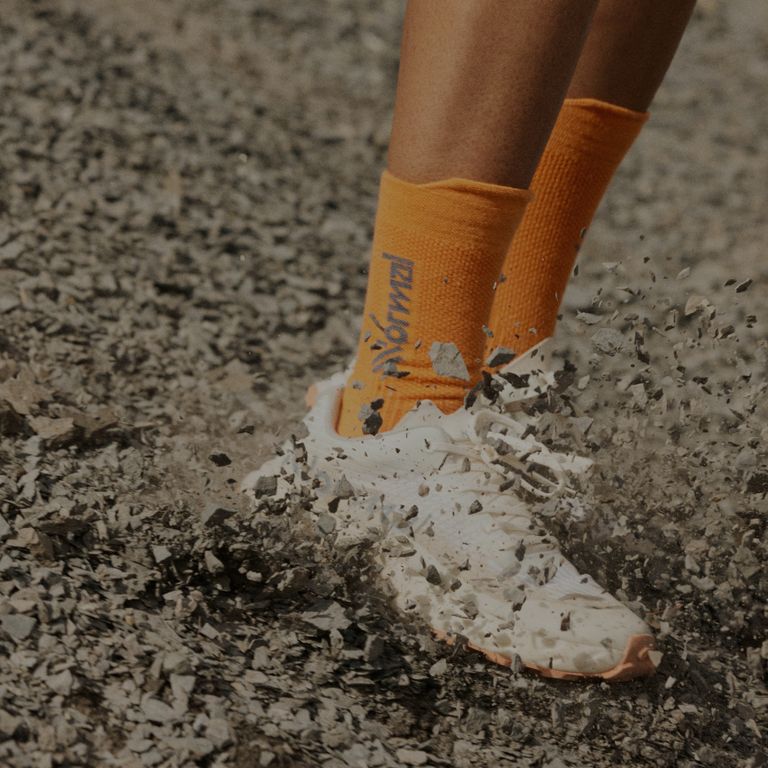
Materials:
Foundation of durability
Developed with Matryx® Jacquard technology, the upper of our Kjerag shoe is four times more resistant than polyester, as it is made of polyamide and Kevlar® threads. Our study also concluded that the EExpure midsole is twice as durable as standard EVA.
Discover more

Ongoing research
We are currently working on a study that will test our iconic Tomir shoe. We want to find out how many kilometres our consumers can use them for on average. Due to this and our commitment to the planet, we will continue to research and place durability at the forefront.
More about Tomir
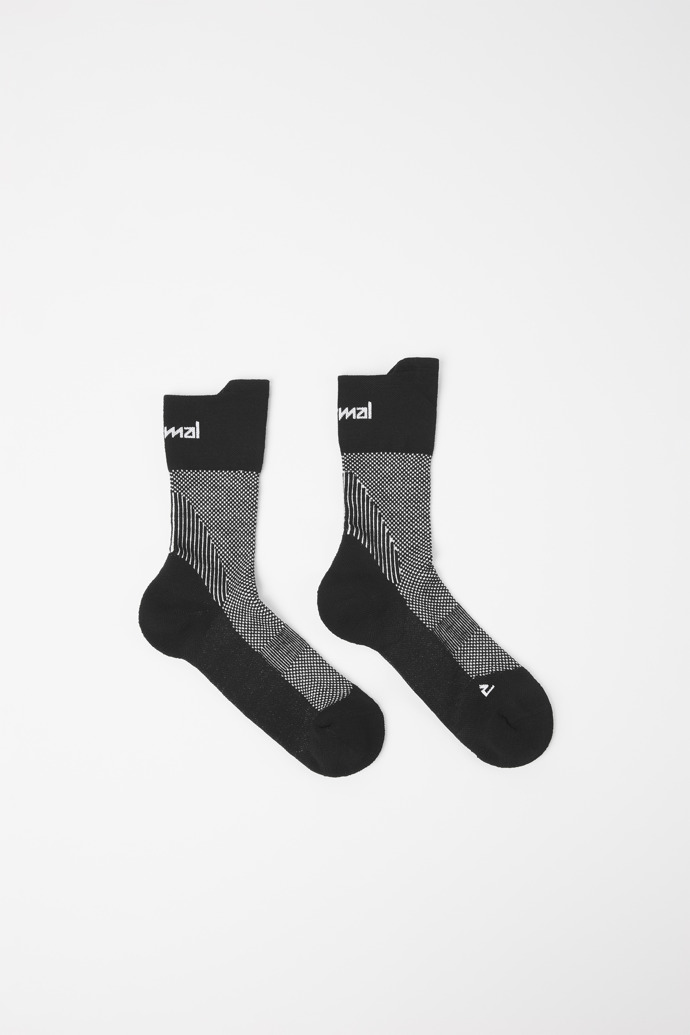
Your NNormal shoes come with a free gift!
1. Add your favourite NNormal Tomir (Tomir 01, Tomir 02, Tomir WP) or NNormal Kjerag 01 shoes to the cart. 2. Once you are ready to order, copy the following code and paste it into the “Promotional code” box in the cart: FREESOCKS24 3. The socks will be automatically added to your cart. 4. Complete your purchase.
